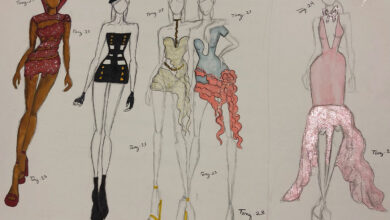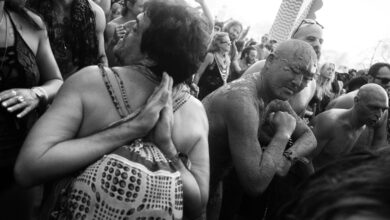Ukraine callingZoot Sees
Signs of the time
Viacheslav Onyshchenko captures the changing visual landscape in Odesa, Ukraine

In his documentary photography project, “Signs of time“, photographer Viacheslav Onyshchenko shows us how Russia’s full-scale invasion in Ukraine has become part of the texture of everyday life in his hometown Odesa. Signs of the war are everywhere—from the glaring, like anti-tank hedgehogs scattered across wide avenues, to the more subtle, like pieces of paper posted with directions to the nearest bomb shelter. The drive to document it all and share it with the world has been what has kept Viacheslav going.
Photographs by Viacheslav Onyshchenko
Words by Michaela Doyle
Viacheslav has been living in Odesa for his entire life. After a career change from the medical field, he landed on photography as the thing that got him out of bed in the morning. When the war in Ukraine started, he was driven to record the quickly changing city around him.
Sandbags stacked in front of municipal buildings, empty beaches, blue-taped windows and other “signs of the time” are visual signals that all is not normal in Odesa. They can be painful reminders if you pay close attention. Yet what was once a concrete rendering of terror and disruption starts to fade into the background over time. For Viacheslav, it was an exploratory process, as he watched empty streets become filled first with barriers and then with life again.
Odesa is a proud city with a strong cultural heritage. Viacheslav has witnessed people speaking more Ukrainian and becoming more patriotic and politically active since the full-scale Russian invasion started, and he is happy to sees that shift in Odesans—even while he expresses regret that it took a war for it to happen.
While there has not been active fighting on the ground in Odesa, as a port city with a naval base on the Black Sea, it is seen as strategically important to Russia’s invasion and has been close to the center of many key events during the aggression. On the first day of the war, more than 15 people were killed in the city by Russian air strikes. And the now-ubiquitous Ukrainian rallying cry “Russian warship, go f**ck yourself” was originally declared by a Ukrainian soldier fighting against Russian invaders approaching Snake Island, which is not far off the coast of Odesa. Odesa is also very close to the Kakhovka Dam, which was destroyed at the beginning of June with disastrous consequences.
As Viacheslav says, tomorrow is always a new opportunity for more photos and more visual recordkeeping. Recently he has been focusing on the aftermath of the Kakhovka Dam catastrophe, as experienced by Odesans. The incident forced an onslaught of debris out to the Black Sea, and now the tides are bringing it back to the shores of local beaches, including pieces of buildings, dead livestock, landmines, and toxic sludge. Viacheslav has captured Odesa residents collecting donations for fellow Ukrainians whose homes were destroyed and also those frustrated by the endless restrictions on their iconic beaches—at first due to landmines and now with the added risk of biological pathogens and toxic chemicals in the water—and willing to skirt the ban on swimming.
After the war is over, Viacheslav wants to continue taking pictures and documenting life in his hometown as the tide changes again. As a documentary photographer capturing moments in the place that has always been most familiar to him, his work has been a way to process the unfamiliar and find his home again.
All quotes by Viacheslav Onyshchenko.


At the beginning of the war, I tried to shoot a lot every day, all this was a curiosity for me. Thanks to the Armed Forces of Ukraine, my hometown did not become a theater of active hostilities, but visually the city has changed a lot: windows sealed with tape, anti-tank hedgehogs, graffiti with other texts, empty beaches, etc.—all this at the beginning of the war was surprising and there was a feeling that it was scenery for the film. The acceptance that this is all for real and could save a life came later. Such a peculiar path for everyone here, going from surprise to acceptance and ignorance.


For me personally, the most memorable moment of this war was helping abandoned animals or trying to get them out of the shelling. … these people [doing this work] are personal heroes.


I was inspired to create my project by a burning desire to photograph everything allowed and possible for me. I do not have the opportunity to shoot classic war documentary photography, but this did not stop me from wanting to capture as many changes in the new reality around me as I can. The simple idea that everything that surrounds me is part of history, which will be interesting to look at retrospectively after a while, drove me out of bed.



At the end of the description of my [project], I ask a rhetorical question “What else can we get used to?”, to which I don’t have an answer. I don’t know how you can get used to the fact that death is close, that everything can end in one moment, just because something will fly and kill you.



I want to convey to my potential viewers the idea that no matter what, life goes on.


[Speaking as a photographer,] I have been shooting my project for more than a year and it has become much more difficult to find something new and unusual that would visually saturate my project more. Speaking like a human, I wish this would all be over soon.


Life inspires me, the feeling of it. Such a light sadness of existence.



It seems to me that a paradox has appeared: death can become closer, and the feeling of life has become somehow sharper.



Residents live their lives, go to work, date, marry, give birth to children, relax, and in general, do everything that they did before the war. And all this is often accompanied by the sound of an air raid alert.


.

I think that the international art community should not stop talking about the war here. There is a certain fatigue from this news, but believe me, our soldiers have it no less.



The organization of exhibitions, photo shows in public places etc, should help not to forget about us. Perhaps not a direct look, but more a reflection on events. We are still here and the war is not over.



In June, after the tragedy on the Kakhovka Dam, I discovered new types of people for myself: some really wanted to help and collect things, like food, animal feed and other things necessary for the victims.


Others swam in polluted water…. For me, it became an example of absurdity in the life around me.



My message to the world:
“Appreciate the moment, it will never happen again!”

To boot…
Viacheslav and other Ukrainian photographers are collaborating with Ukrainian Photo Diary to collect the archive of the war in Ukraine and eventually organize a charity exhibition with the proceeds going to the restoration of destroyed schools.
Learn more about what’s happening in Ukraine and meet other Ukrainian creatives in ZOOT’s Ukraine calling section.





